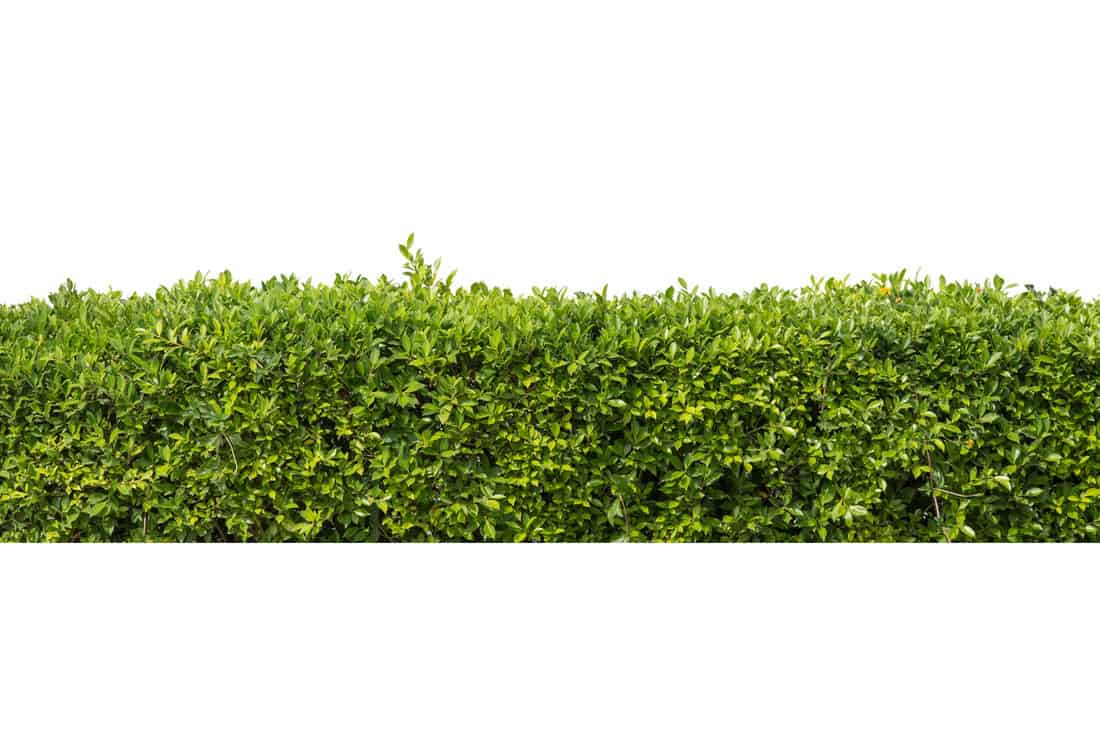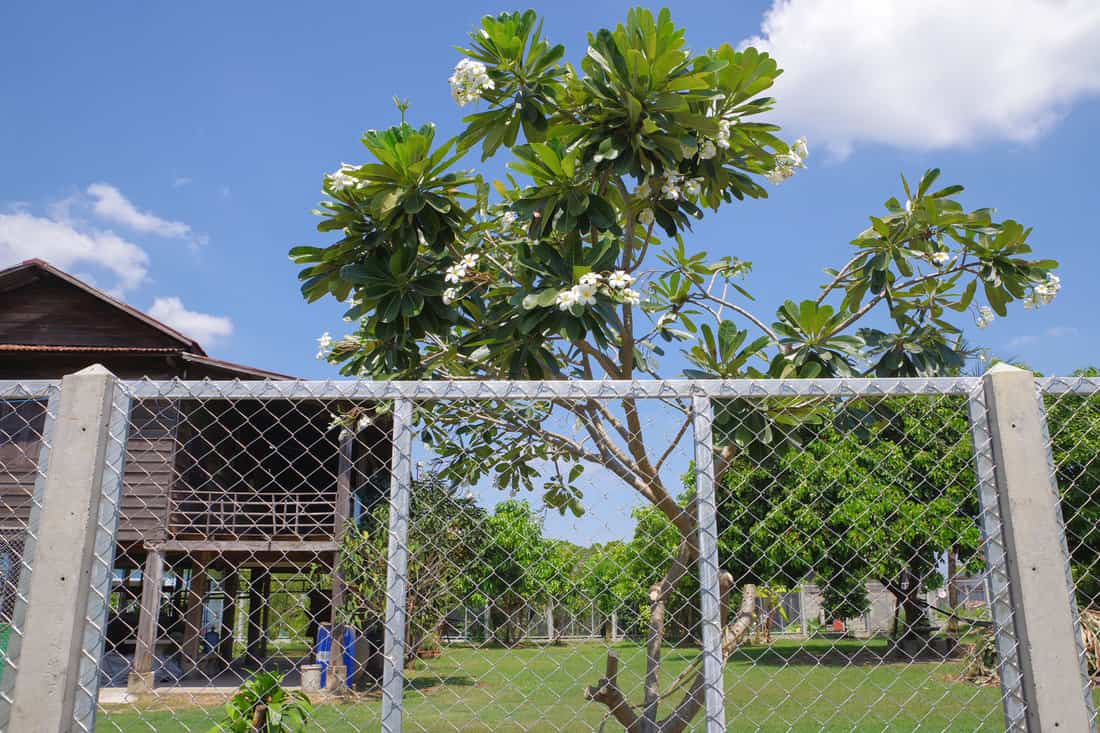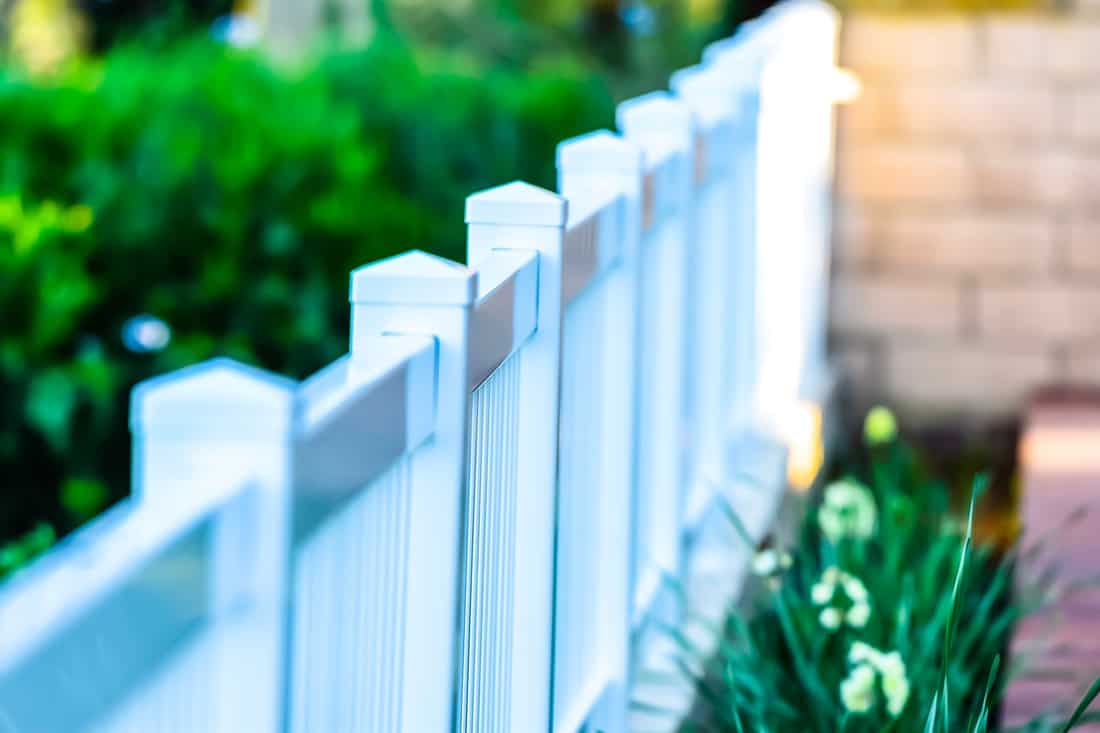A fence is meant to form a barrier around your property to keep outsiders, whether people or animals, away. But what if there are wide gaps at the bottom of the fence? Are you one of those who have this concern? To help you solve this problem, we have researched ways to fill gaps at the bottom of different types of fences.
Various materials can be used to fill the gap at the bottom of the fence. You can choose depending on the type of fence you have and what your needs are. Here are ways to seal the gap at the bottom of your fence:
- Block with a horizontal wood board
- Place chicken wires
- Add rock fillers
- Put concrete blocks
- Weld a steel plate
- Attach a steel mesh
- Attach an animal barrier fence
- Line up the plant box
The wide gap at the bottom of your fences needs to be addressed immediately. The good news is that covering those gaps is not that hard. We will talk about the materials to use and methods for filling gaps under various types of fences. Keep scrolling to get a detailed description of each technique.
![A steel panel fence in a suburban setting - How To Fill The Gap At The Bottom Of A Fence [Inc. Vinyl, Wood, And More]](https://homedecorbliss.com/wp-content/uploads/2022/09/A-steel-panel-fence-in-a-suburban-setting-How-To-Fill-The-Gap-At-The-Bottom-Of-A-Fence-Inc.-Vinyl-Woo.png)
Filling Gaps At The Bottom Of Different Fence Types
There are many kinds of fences. Each one has an appropriate material for filling gaps underneath. Using unsuitable materials may not effectively keep animals and intruders at bay. More importantly, if you have pets, they may be able to escape if they can dig through the bottom of the fence.
Vinyl Fences
We sometimes add affiliate links and content that was curated and created by our team with the help of advanced ai tools to help showcase the best design styles.

These fences are pretty popular because they can be custom-made. They are also sturdy. A material called polyvinyl chloride resin makes up vinyl fences. This material is responsible for the durability of the fence.
If you have gaps in your vinyl fences, it is not a big problem. Follow these steps to fix it:
- Add a galvanized steel mesh. Measure the gap to know how much material you will put. To secure the mesh, dig 3 inches to create a ditch.
- Attached one end of the mesh to the bottom of the fence. Put the other end to the ditch.
- After securing the mesh, cover the ditch with dirt. Ensure that the dirt is not loose.
- Using concrete blocks is also another way of filling the fence’s gap.
- To install the concrete blocks, you must dig the ground to lay its foundation.
- You can stack the concrete until the gap is sealed after laying the foundation.
- Secure the blocks in place with packed dirt.
Click here to see this steel mesh on Amazon
Chain Link Fences

A chain link fence is made of galvanized steel wires woven together. The diamond pattern is formed by linking the wires together. These wires are often seen on barns, government facilities, penitentiaries, and construction sites. Moreover, they are also used in homes.
The easiest fix to the gap in this type of fence is to put a plant box in front of the fence, that is if the post is not cement. You can also add plants like shrubs. This not only blocks the gap but also creates an aesthetic appeal to your fence.

Another way of blocking the bottom of the chain link fence is to attach a tent stake or a chain link fence stake. You must hammer the link to the ground and hook the other end to the fence. This creates a sturdy barrier, and your pets won’t be able to escape.
Click here to see this fence stake on Amazon.
If you want more privacy, you can cover the entire fence with wood, as in this example.

You may also line up concrete blocks at the bottom of the fence. To secure the foundation of the block, bury it in the ground.

Lastly, attaching chicken wires is also a good solution to fill the space at the bottom of this type of fence.
Wood Fences

Wooden fences are classic types of fences. To cover the gaps without sacrificing the aesthetics of the wood fence, you may add decorative rocks. Fill the space until the bottom part is covered. Do not cover the gap completely.

Apart from rock filler, adding plants is also a good solution to fence gaps.

Lining up bricks to cover the space is in also a good idea, like in the picture below.

Attaching wire mesh also works to keep wild animals from entering the gaps.

These solutions are best for both functional and aesthetic purposes for wooden fences.
Wrought Iron Fences

It is quite challenging to cover gaps under iron fences. However, you can use a metal sheet to do the job.
Paint the metal sheet the same color as the fence so it won’t look like an eyesore. You’d have to weld the other end of the sheet to the fence. To stabilize the barrier, bury the other end of the sheet in the ground.
Click here to see this metal sheet on Amazon
Aluminum Or Steel Fences

Generally, aluminum fences are custom-made. This eliminates the possibility of potential gaps under the fence. However, in case you still have issues with spaces under the fence, you may attach an animal barrier fence.

This animal barrier is made of galvanized steel and is easy to install. You just need to hammer the barrier to the ground. This adds protection to your fence, and it prevents animals from digging.
Click here to see this barrier on Amazon.
Rail Fences
Rail fences are often found on farms to act as borders. There are different types of rail fences. However, horizontal woods connected by vertical posts is the most common one. If privacy is not your priority for erecting a fence, then you can go with this one as it is low maintenance.

It is easy to block the slots of rail fences. You just have to use either a chicken wire or an animal barrier like the example below.

Click here to see this chicken wire on Amazon.
For a more aesthetic look, you can also add plants to the mix.

Why Are There Gaps At The Bottom Of The Fence?
There are numerous reasons why a fence has a gap at the bottom.
Uneven ground is the most common cause of spaces between the fence and the ground. Fences often follow a straight line unless you had yours customized to follow the terrain of your land.
Another thing is that the standard height of the fence does not touch the ground. If the fence is pre-made, like a vinyl fence, for example, the dimensions may not fit your yard properly.
The material of the fence can also be the culprit for the gap. Wood, for example, expands and contracts. Over time, there may be gaps under the fence because of this.
Certain types, like rail fences, are designed to have wide gaps. Some vinyl fences also have the same design. You may want to reconsider choosing these designs if you own pets.
Lastly, the post hole is not deep enough for the fence. Not installing the poles properly will result in a huge gap at the bottom of the fence.
Should There Be A Gap At The Bottom Of The Fence?
Typically, a fence should be 2 inches above the ground. This is common on wood fences. It is to protect the wood fence from rot. The gap also allows water to clear out of the property.
Should There Be A Space Under A Vinyl Fence?
Earlier, it was discussed that gaps at the bottom of a vinyl fence should be filled. However, this doesn't mean filling up the space. You should leave a little gap, enough to let air pass through.
Vinyl fences, in particular, should not be fixed too close to the ground. The reason behind this is to prevent pressure from toppling the fence. Moreover, rainwater may gather and cause flooding in your yards. These are the reasons why leaving gaps when installing vinyl fences is recommended.
What Is A Kickboard On A Fence?
This part of the fence is attached to the bottom to keep it from touching the ground. Rot board is another term for it. For rot and pest protection, the kickboard is treated with wood sealant. They are an optional part for wood fences, though.
In Conclusion
Although there should be a little gap at the bottom, a wide space can defeat the purpose of having a fence. The gap will let your pets out and other animals, even intruders, in. Sealing the spaces at the bottom of your fences is an easy task, and there are several materials to use and ways to do so.
Now that you know how to fill these gaps, you'll be more confident that your yard is safe from outsiders. Not only that, but this post also gave you ideas on how to make sealing the gaps both functional and aesthetic.
If you like what you read, be sure to check out these related articles:





